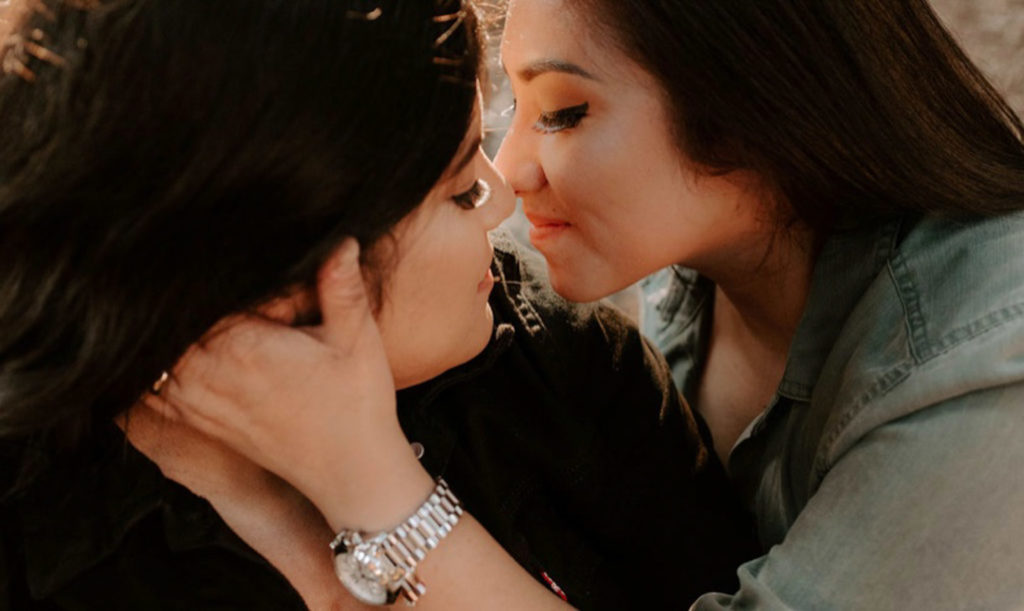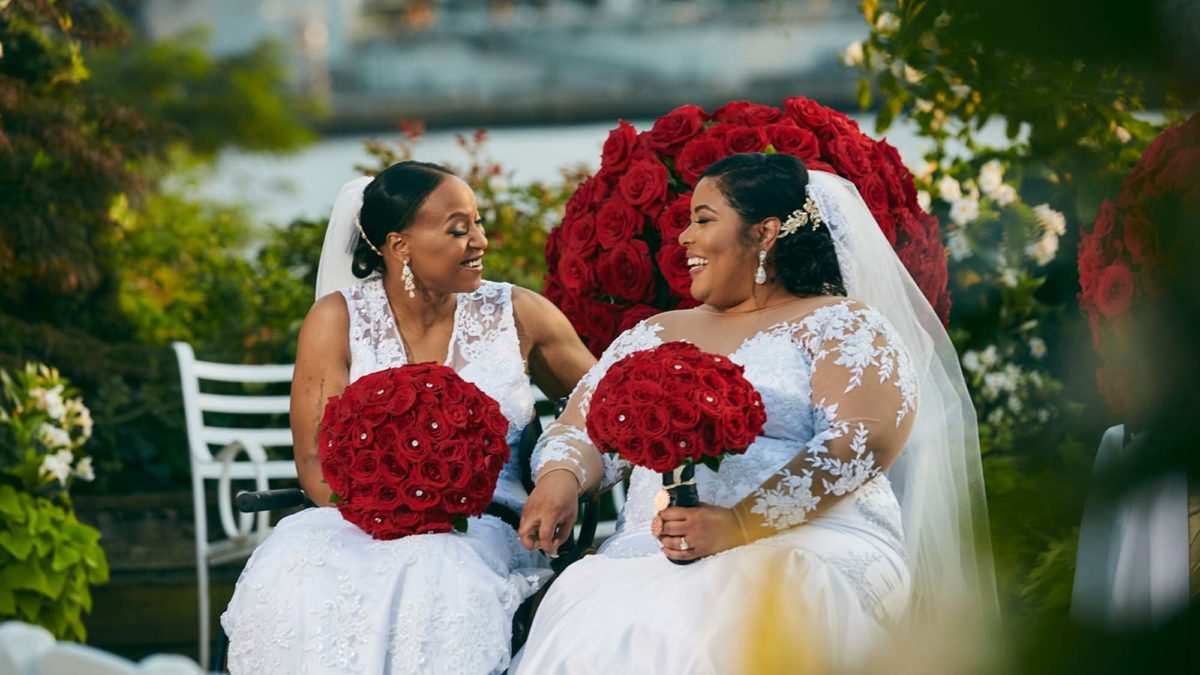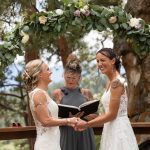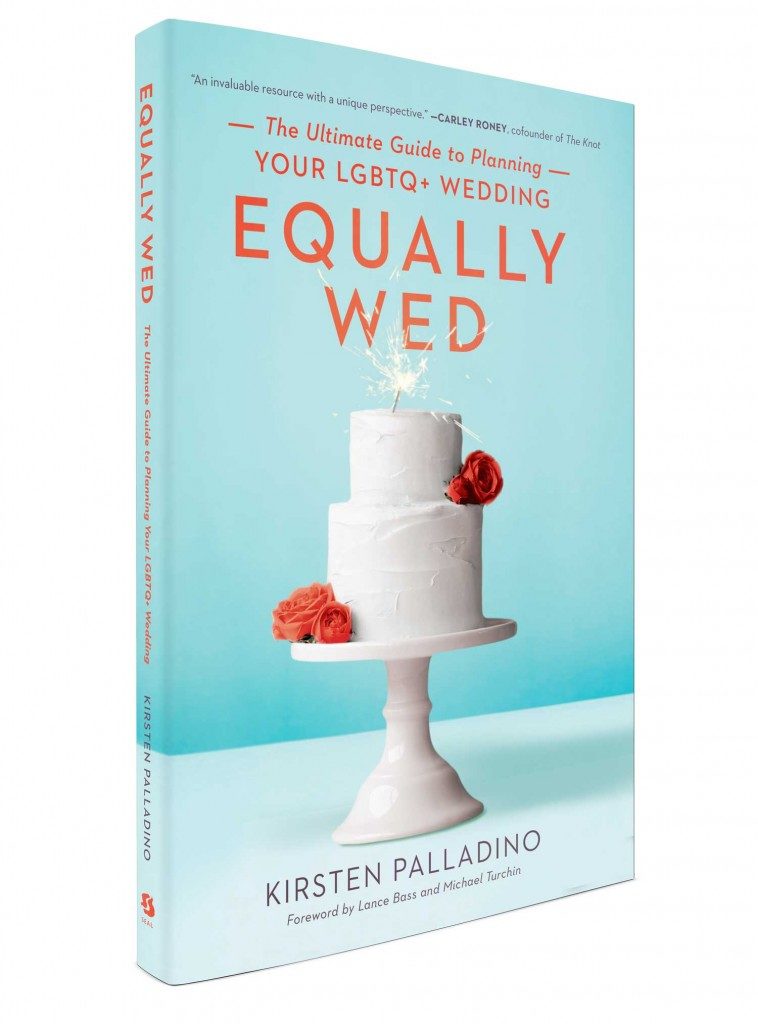For years, Equally Wed Pro and Equally Wed couples have repeatedly offered vendors the same advice: Use gender-neutral terminology anywhere you can. LGBTQ+ couples continue to face an industry built off of heteronormative and gender-normative traditions, and navigating all of that can be a big challenge. But it doesn’t have to be this way, and often, it takes a few simple fixes for LGBTQ+ couples to feel respected when planning their weddings.
When wedding planning, there are many areas where both vendors and couples can update the terminology they use to make it more inclusive for those of all genders and sexualities. Here are a few terms to implement:
1. Marrier, Celebrant or Partner
All three of these are great alternatives to the use of bride and groom. These labels can be used on vendor intake forms (i.e. Partner 1, Partner 2), as well as anywhere else the couple getting married is mentioned.
2. Wedding Party
Wedding party is a more inclusive substitute for bridal party.
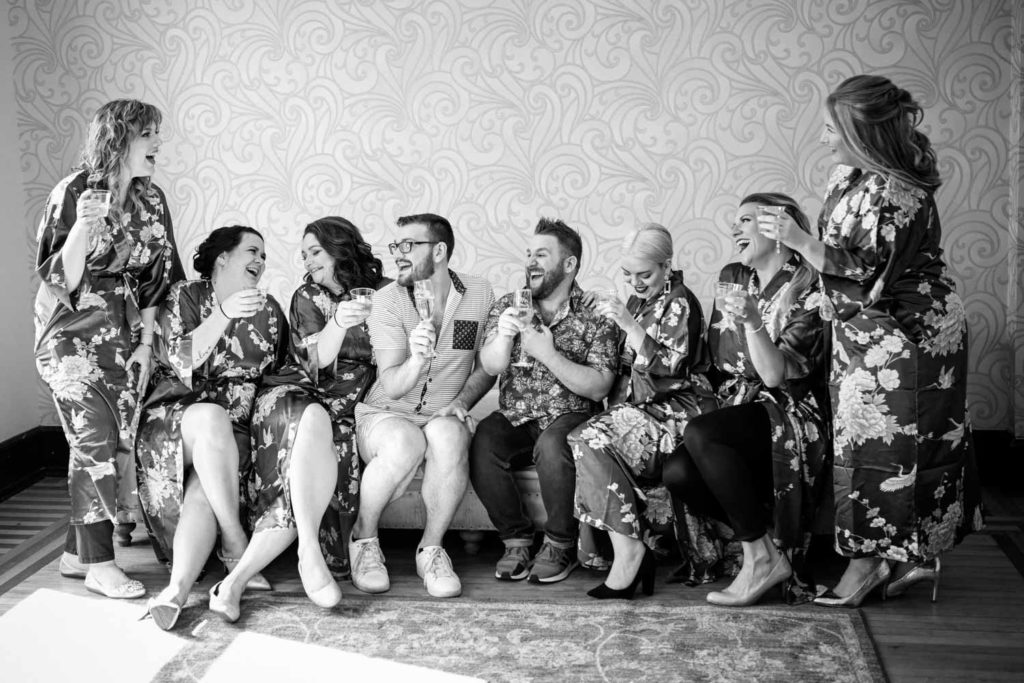
3. Flower Person
There are no rules about who has to be the person throwing flower petals down the aisle. It can be anyone, old, young, boy, girl or nonbinary person. Calling this role the flower person may help couples feel more comfortable being creative.
4. Wedding Suite
Many wedding venues have a special bridal suite, but LGBTQ+ couples don’t always have a bride. Alternatively, sometimes there are two brides, and having only one room called the bridal suite can feel equally exclusionary. Offering two gender-neutral wedding suites for the couple to get ready—if they want to get ready separately—is the best way to go.
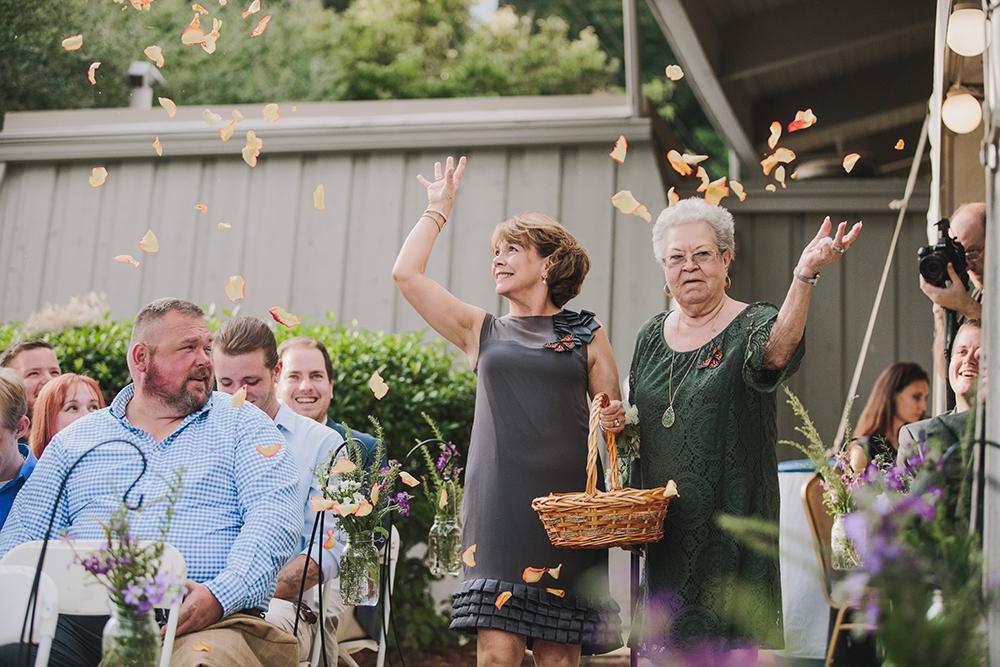
5. Future Spouse
There is no need to presume that someone will become a husband or a wife. Using future spouse is a perfect way to leave those assumptions at the door.
6. Parent Dance
The famed father/daughter and mother/son dances are another place where gender is overemphasized. Not only are daughters allowed to dance with mothers and fathers allowed to dance with sons, but sometimes, the marriers or parents don’t identify with any of these terms. Simply calling it the Parent Dance is a great way to avoid alienating anyone.
